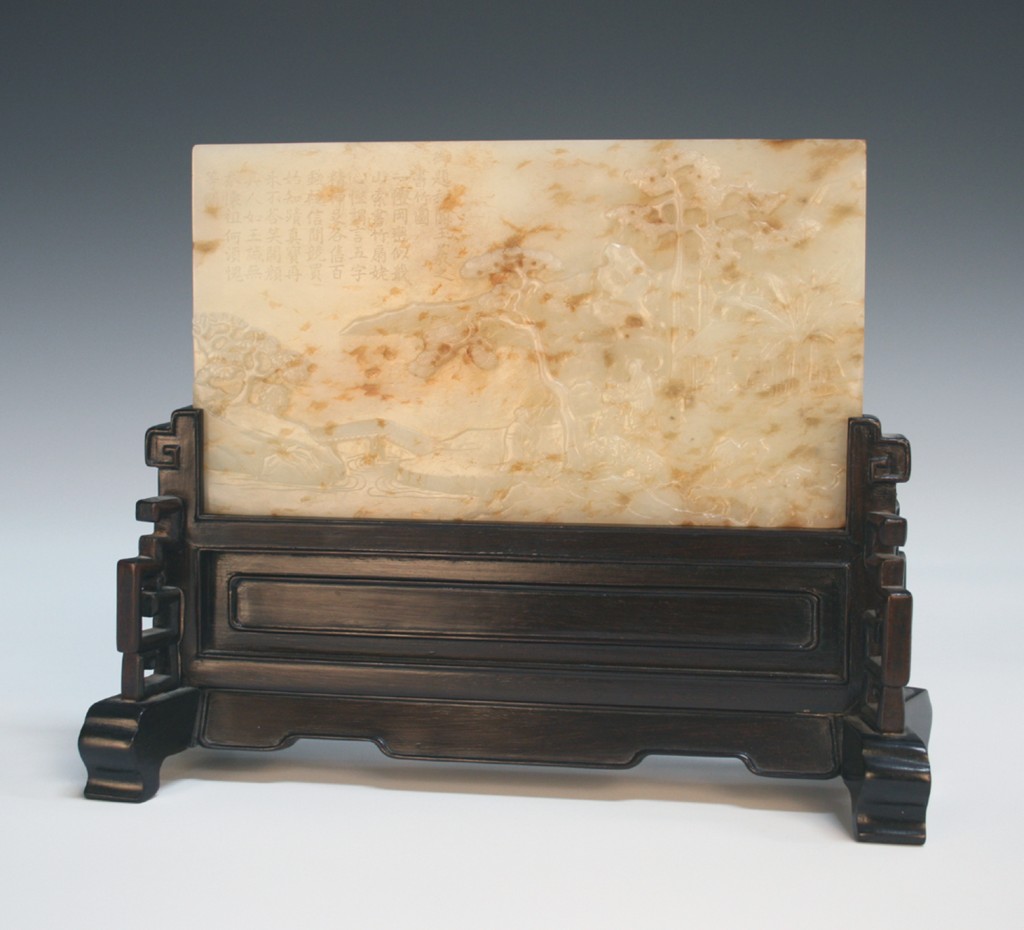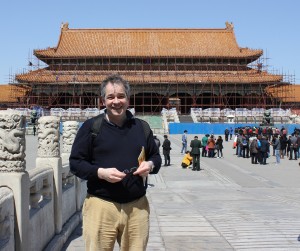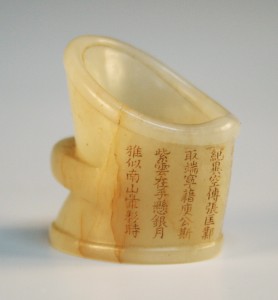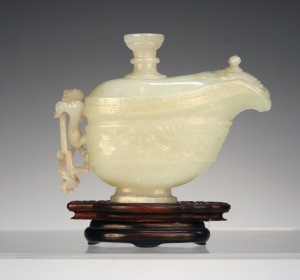

The Chinese have always prized jade more highly than gold. This hard translucent stone has, over the centuries, been worked into decorative and ritual objects, as well as ceremonial weapons.
Jade was worn by kings and nobles in life and was buried with them, affording the material a high status and associations with immortality. Later it was the exquisite objects fashioned from this remarkable stone which continued to be highly prized, connecting the Ming and the Qing periods with earlier times.

The English translated the Chinese word ju as jade. Our interpretation of jade is narrower than that of the Chinese including only nephrite and jadeite. Nephrite is typically white in colour. However, the presence of copper, chromium and iron can gift it with colours ranging from subtle grey-greens to brilliant yellows and reds. Jadeite has an even broader spectrum of colours and was notably employed from the 18th century.
It was an extraordinary moment when I discovered the exquisite small jade table screen in a modest flat in Richmond. It realized £120,000 in a Toovey’s specialist Chinese and Asian Art Sale, selling to a Chinese connoisseur. The 18th century panel is delicately carved with a shoreside scene. It portrays a meeting of scholars. In the corner you see nine beautiful lines of calligraphic text. On the reverse is a scene depicting a figure in a garden hut; six further figures sit beside a stream flowing from a waterfall. Jade workshops created pictures on jade, often following the themes and conventions of Chinese painting. Chinese depictions of nature are seldom just representations of the landscape. Rather, they reflect the artist’s spiritual, emotional and intellectual reaction to the natural world. It is a tradition which connects the artist with their ancient civilisation.

The 18th century Chinese pale celadon jade lotus bowl’s decoration reflects the influence of Buddhism. The lotus flower, upon which the form of this bowl is modelled, represents purity and enlightenment. Repeated lotus flowers also decorate the lid. The body has a frieze of petals each containing one of Buddhism’s eight emblems, including the Dharma Wheel. The wheel symbolises the auspicious qualities of the turning of the Buddha’s teachings, in all realms and at all times, enabling beings to experience the joy of servanthood and liberation. The bowl and cover was auctioned at Toovey’s for £52,000.

The term libation refers to the ritual pouring of a liquid as an offering to a god or a spirit. The Chinese traditionally poured rice wine or tea left to right in front of an altar as an offering to their gods in honour of the deceased. The Chinese archaistic jade libation vessel once again dates from the 18th century. The sides are finely carved with stylized birds against clouds whilst the handle is entwined by a dragon. This ritual object was sold at Toovey’s for £70,000.
The ceremonial Chinese Imperial quality jade archer’s ring dates from the Qing dynasty. It is carved in the form of a horse’s hoof and finely incised with an eight line text. The characters are heightened with gilding. It realised £40,000 at Toovey’s.
The Chinese and Asian Art Department at Toovey’s has been established for twenty years. Over all these years the Antiques Roadshow specialist, Lars Tharp, has worked closely with Toovey’s resident specialist, Tom Rowsell. Toovey’s particular success has been to connect its selling clients directly with wealthy Chinese mainland collectors who, like their forebears, value jade more highly than gold. Tom and Lars are always pleased to discuss the acquisition or sale of Chinese and Asian Art. They can be contacted by telephoning 01903 891955.
By Revd. Rupert Toovey. Originally published on 26th August 2015 in the West Sussex Gazette.